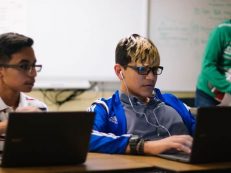The start of primary school journey is a time of uncertainty, especially for parents of children with special needs.
We can understand why parents may feel anxious and unsure about their child’s transition to primary school, as there are several unknowns and factors that affect the process.
However, there are ways in which parents can prepare for the transition.
1. Start preparing early
The first day of school is a huge milestone for children and parents alike. To make this transition as easy as possible, you can begin planning for it at least 3 months in advance.
The earlier you start, the more organised you will be when your child is in primary school. Ask the primary school teacher any question you may have.
It will also help you plan ahead and prepare for their recess time between sessions at school.
This includes: What activities will your child do? Who will they be with? How long will the school day take? Will there be any school homework?
Is there any school library? How will you cope if things don’t go according to plan? Who can you ask if your child’s school life go badly?
This will help you and your child feel more prepared for the new school year.
2. Spend time together reading at home
Learning basic skills such as reading, writing and maths are important for children to develop a firm foundation of knowledge.
If your child has difficulty learning these skills, it’s important that you spend time together reading at home.
This will allow you to talk about the story and make sense of the information presented.
You can also use this time to ask questions about the book if your child is struggling to understand what’s happening.
The more time you spend reading with your child at home, the more likely it is that they will learn these skills by themselves and not need extra support at school.

Photo by Ketut Subiyanto on Pexels.
3. Get used to talking about feelings and thinking positively
Emotional skills are important for children to have and to develop, but it is crucial that you teach children how to express and manage their emotions.
You can do this by helping them practice thinking about their feelings positively and talking about them.
In order for this plan to be successful, the child needs plenty of practice so that he can learn how to recognise his emotions and respond accordingly.
The more he practices using this plan, the easier it will become for him to use social skills in school and at home.
4. Introduce new foods
A smooth transition to the school canteens’ menu is essential for all primary school students.
Children will be required to learn about new foods in the cafeteria. Therefore, it is important to familiarize them with the menu as early as possible.
You can do this by introducing them to other foods they have never tasted before. Teach them not to be picky and to try new foods that are not as familiar.
You can also include various flavours in their food, especially in their morning and afternoon snacks.
Make sure you teach them how to use the utensils and how to eat food correctly.
Making the Best of the First Day in School
Primary school children who prepare well for their transition will be more likely to settle into their new school.
By getting children used to new activities and procedures, you will help them make the best of the first day of school.
Our Cudy Tutors can also help your kids with their academic work.
Please visit our website here for more information about our tutoring services and start your tutoring session today!




